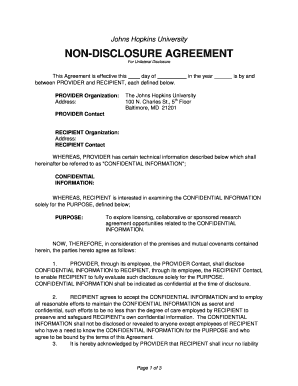Content

From there, the decision-makers list the strengths and weaknesses as well as opportunities and threats. The primary goal of SWOT analysis is to increase awareness of the factors that go into making a business decision or establishing a business strategy. To do this, SWOT analyzes the internal and external environment and the factors that can impact the viability of a decision.
One of the primary drawbacks of SWOT analysis is the absence of recommendations that may be put into practice. This implies that even if the SWOT analysis might spot prospective opportunities and threats, it does not offer comprehensive advice on how to seize these chances or reduce the risks brought on by threats. Additionally, subjective analysis can lead to different interpretations of the same data, which can lead to confusion and misunderstandings. Finally, subjective analysis can be difficult to replicate, as the same results may not be achieved if the analysis is conducted by a different individual or a team.
As with opportunities, threats are outward-facing and take into account the external market environment in which you’re positioned. These may be things that get in the way of your ambitious endeavors, like changes in quality standards or new innovations from competitors. While not always a mood-booster, identifying your threats may also spark additional opportunities, such as the change in technology. To significantly impact company performance, business decisions must be based on reliable, relevant and comparable data. However, SWOT data collection and analysis entail a subjective process that reflects the bias of the individuals who collect the data and participate in the brainstorming session. In addition, the data input to the SWOT analysis can become outdated fairly quickly.

SWOT also allows you to analyze the weaknesses in your company and how to improve them while looking at how threats can be identified and mitigated. Taking advantage of your strengths and developing a marketing plan in response to the various variables present is another benefit of SWOT. SWOT Analysis is a useful tool for identifying a company’s strengths and weaknesses, as well as external opportunities and threats. However, it can be time-consuming and resource-intensive, and may lead to a narrow, internal focus and lack of creativity.
How to conduct a SWOT analysis
The focus is on key actions or mitigation plans that are clearly supported by each SWOT. If you cannot clearly explain why you outperform your competitors on items in the strengths/opportunities category, you may be exaggerating either your strengths or your opportunities. You can use the six business planning categories as a practical strategy to organize the information, define short- and long-term priorities, and assist in achieving the overarching goal of growth. It can be difficult to translate the SWOT challenges into concrete actions that can be incorporated into a plan. It becomes manageable when the actions are divided into six categories (shown below) that define the context for how organizations operate. Once the SWOT framework has been completed and issues have been prioritized, actions must be prepared to solve the issues.

This allows the business to build a dependable framework that can be utilized for future strategizing. For a business to maintain productivity and stay ahead of the curve, a SWOT analysis is necessary. It forces leaders to take a look at the bigger picture, plan for the future, and determine what the company’s competitive advantage is.
For example, the company debating whether to release a new product may have identified that it is the market leader for its existing product and there is the opportunity to expand to new markets. However, increased material costs, strained distribution lines, the need for additional staff, and unpredictable product demand may outweigh the strengths and opportunities. The analysis team develops the strategy to revisit the decision in six months in hopes of costs declining and market demand becoming more transparent. Like weaknesses, the last step of identifying your threats may not be the most enjoyable in the analysis process.
SWOT analysis assesses internal and external factors, as well as current and future potential. SWOT analysis is a widely used framework for strategic planning that helps businesses assess their strengths, weaknesses, opportunities, and threats. It is a simple yet powerful tool that can help businesses understand their current position and make informed decisions about their future. However, like any other tool, SWOT analysis has its advantages and disadvantages. In this article, we’ll explore both sides of the coin and help you decide whether SWOT analysis is the right tool for your business. In conclusion, SWOT analysis is a useful tool for businesses to assess their strengths, weaknesses, opportunities, and threats in the market.
Typically, it is used in a strategic planning process to effectively evaluate where the company stands before moving forward with an opportunity or managing a limitation. This factsheet examines the four elements of SWOT and the process of conducting an analysis. It provides tips for conducting the analysis and a ready-to-use SWOT analysis template.
Want to Learn More About CU?
Checking whether your current methods and plans remain the best way forward can help you keep up in an ever-changing business climate. This is how you’ll keep your business fresh in customers’ minds and edge out your competition. Once you’ve developed strategies and included them in your strategic plan, be sure to schedule regular review meetings.
I’ve compiled some questions below to help you develop each section of your SWOT analysis. There are certainly other questions you could ask; these are just meant to get you started. …into actions that can be agreed, planned, assigned, and delivered by a team or number of teams. When initiating a SWOT analysis, there are several questions you can ask to help identify each area of analysis.
What Is an Example of SWOT Analysis?
Reviewing an example of a simple internal and external analysis utilizing SWOT helps provide a deeper understanding of these concepts. SWOT analysis is a strategic planning technique used to assess the SWOT (strengths, weaknesses, opportunities, and threats) present in a project or commercial initiative. It entails stating the project’s or business’s purpose and identifying the internal and external elements that are helpful and harmful to reaching that goal. It is employed to evaluate the general level of a company’s competitiveness in relation to its surroundings.
- Linda Pophal, strategic marketing communication consultant and content marketer at Strategic Communications, said these strategies should focus on leveraging strengths and opportunities to overcome weaknesses and threats.
- Analysts present a SWOT analysis as a square segmented into four quadrants, each dedicated to an element of SWOT.
- Independent SWOT analysts, investors, or competitors can also guide them on whether a company, product line, or industry might be strong or weak and why.
- As a result, a problem or process that’s addressed using the SWOT tool may be thought of in terms of phases or a life cycle.
- Understanding the opportunities that exist for you is now useful as you have a sense of your strengths and weaknesses, making those opportunities easier to assess.
- The outcome of the analysis will help you to understand factors both internal and external to your organisation which can impact upon strategy and influence business decisions.
From economics and marketing to finances and nonprofits, SWOTs set a foundation that can be applied to just about any situation. In order to make the most of SWOT Analysis and avoid its drawbacks, it is important to observe some best practices and tips. Firstly, conduct a thorough and objective research before commencing the analysis. This should include reliable sources of data, such as market reports, customer feedback, industry benchmarks, and competitor analysis.
MAJOR BENEFITS OF SWOT ANALYSIS
Companies engage in structured brainstorming, which can be supported by a Strengths, Weaknesses, Opportunities and Threats (SWOT) analysis. The SWOT methodology advantages, such as its use to address a variety of business issues, makes it a desirable tool to support some brainstorming sessions. However, the tool’s disadvantages, such as the subjective analysis of an issue, make it less desirable for others. To accurately pinpoint a company’s strengths, flaws, opportunities, and dangers, extensive study and analysis are needed.
Linda Pophal, strategic marketing communication consultant and content marketer at Strategic Communications, said these strategies should focus on leveraging strengths and opportunities to overcome weaknesses and threats. Employ a SWOT analysis before you commit to any company action, whether that’s exploring new initiatives, revamping internal policies, considering opportunities to pivot or altering a plan midway through its execution. Sometimes it’s wise to perform a general SWOT analysis to check on the current landscape of your business and improve operations as needed. The analysis can show you key areas where your organization is performing optimally and areas where operations need adjustment. A SWOT (strengths, weaknesses, opportunities and threats) analysis is a planning process that helps your company overcome challenges and determine which new leads to pursue.
- By figuring out what these possible threats are, your company can analyze how to prevent them.
- It is vital to recollect that SWOT analysis can be prejudiced (and often powerfully) by the individuals who perform the investigation.
- For example, if your weaknesses indicate you need more work in the area of public relations, you can use a swot analysis to determine which social media sites your target market is likely to frequent.
- Unlike some of the other business analysis tools, the SWOT can cover both internal and external factors.
This aspect can provide a major analytical advantage, as outside as well as inside influences can be strategized. For instance, thinking not just about opportunities within the company to expand but possible markets in which to grow can help create a larger picture from which to work. Dealing with both positive advantages of swot and negative potential outcomes are other advantages of a SWOT analysis since the picture is then not only “big” but also more realistic in its scope. SWOT analysis is a powerful tool for healthcare organizations to gain insight into how they can best optimize their operations and improve patient outcomes.
Ways to Practice Self-Care While Learning Online
It may be applied informally to brainstorm and produce ideas, or it can be applied formally to evaluate a specific problem. It may be used to swiftly evaluate a variety of elements, including market trends, competition risks, and customer wants. The procedure includes facilitating a brainstorming session where the four SWOT analysis elements are explored. As a consequence, the opinions and judgments of the individual participants are combined to form group opinions that the whole group supports.

By focusing on the areas that need improvement and capitalizing on the opportunities, businesses can set realistic goals and develop a plan of action to achieve them. However, SWOT analysis also has some drawbacks that can limit its usefulness and validity. One of the main disadvantages is that it can be subjective and biased, depending on who conducts it and how they interpret the data.
Disadvantage: No Weighting Factors
This allows businesses to plan for success instead of jumping in blindly without understanding how circumstances may be affected by different internal and external factors. SWOT is an acronym that stands for strengths, weaknesses, opportunities, and threats. SWOT analysis in project management is a tool used by businesses to measure themselves against their competitors.
Throughout the busy work day and meetings, it can be easy to forget to assess chances the company has to grow. Going through the SWOT process allows leaders to take the time to not lose out on any lucrative opportunities. SWOT is a large part of the strategic planning process, but many leaders are not utilizing this tool for various reasons.
